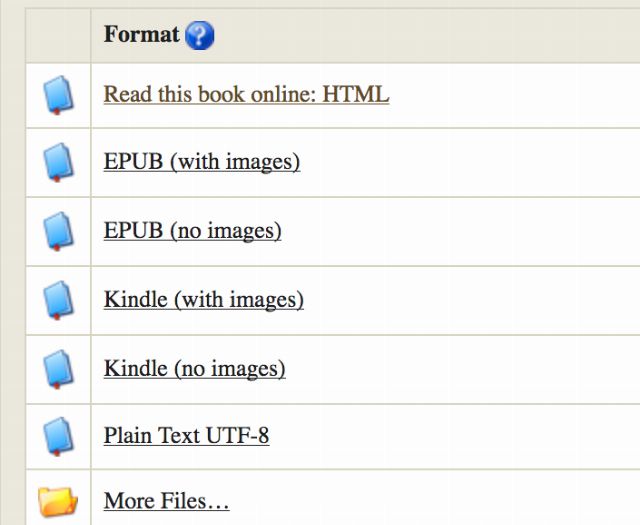
This is a collection of essays that have played a role in my thinking and preparation for this class.
The first three are central to the class. The first two present my justification for the view that narrative is fundamental to human experience and understanding, hence a power tool for artists. The third gives a comprehensive and widely accepted overview of the writing process.
The others articles are completely optional. Read what seems interesting.
Please read
Surviving the Star Trek Transporter (750 words, 4 minutes)
Surviving the Star Trek Transporter
Background for why we're going to talk about narrative so much.
Our Mortal Story (300 words, 2 minutes)
More about the importance of narrative and a book recommendation.

Editing (2100 words, 11 minutes)
A good solid discussion of the necessary multiple-draft process. Parallels many of the points made in Stephen King's On Writing. Be warned, this is a dense laundry list of ideas and you won't be able to absorb them on the first reading. It's a good article to return to when you have some pages and you're not sure what to do next. Somewhere in here will be a good next step.
Additional reading
Susanne Langer, Problems of Art (1500 words, 8 minutes)
Susanne Langer, Problems of Art
Such knowledge is not expressible in ordinary discourse. The reason for this ineffability is not that the ideas to be expressed are too high, too spiritual, or too anything-else, but that the forms of feeling and the forms of discursive expression are logically incommensurate, so that any exact concepts of feeling and emotion cannot be projected into the logical form of literal language.
Susanne Langer Problems of Art
This article is an overview of the ideas to be found in this philosopher's book on art and creation. If this approach appeals to you, this will be a gateway to much more of the same.
The Unsayable (2300 words, 12 minutes)
What, if anything can be said about what is unsayable
In the class I will be asserting that we can transmit intangible feelings and ideas through words. And I'll try to convince you that there is value in attempting to describe the mysteries and paradoxes that artwork may evoke. For those reasons, here's an examination of the ineffable.
The rise and fall and rise of logic (3300 words, 17 minutes)
The rise and fall and rise of logic
Like the answer to the question 'What is art', the answer to the question 'What is logic' is not simple or singular. Does an overview of logic have a place in an art class? I think it does. At the very least, it might stand as the 'tails' side of the coin that has the ineffable as 'heads'.
Including it here also gives me an excuse to link this fine picture-book of logical falacies.
This article has a section that made me think about asemic writing, which is popular with some book artists (like Jody Alexander). It also tickled some of the ideas I found in the Susanne Langer article.
Some bits that caught my eye (related to language and asemic writing):
In the preface to his book Begriffsschrift (1879), he offers an illuminating description of the motivations for introducing this new language
I found the inadequacy of language to be an obstacle; no matter how unwieldy the expressions I was ready to accept, I was less and less able, as the relations became more and more complex, to attain the precision that my purpose required. This deficiency led me to the idea of the present concept-script.
Doing logic came to mean simply working with special symbols, not with ordinary words.

Aesthetics (4700 words, 38 minutes)
The main category article on Aesthetics on the Internet Encyclopedia of Philosophy has many interesting points of view presented in a brief survey. Articles like this are a bit dense and I find it easier to consume them a bit at a time over a couple of days.
There are 9 sub-topics for Aesthetics too if you're really crazy for this stuff.
This article presents a good variety of viewpoints about the 'why' and 'what' of art. This can be very useful if your preconceptions about what art is (or should be) are hindering your enjoyment or the discovery of your best voice.
If this kind of writing turns you off, then you can consider the question in this form.
Here are a couple of tidbits that may encourage you to dive in:
Perceiving the object in such cases is an end in itself; it is not a means to a further end, and is enjoyed for its own sake alone.
We are locked in our individual self and must make peace with who we experience ourselves to be...
... even when we try to gauge by outside measures, we are locked inside our own individual experience.
High art beat popular art, Hauser said, because of two things: the significance of its content, and the more creative nature of its forms. Roger Taylor, by contrast, set out very fully the “leveller’s” point of view, declaring that "Aida" and "The Sound of Music" have equal value for their respective audiences.
Art is a human activity consisting in this, that one man consciously, by means of certain external signs, hands on to others feelings he has lived through, and that others are infected by these feelings and also experience them.
John Legend interviewed on writing (video, 22 minutes)
John Legend interviewed on writing (video, 22 minutes)
A bit awkward to begin, but presents a good down to earth perspective on the creative process. Notice the description of the expansion and development process that eventually produces a narrative, the editing process, combining the written content with the larger work... Also consider how 'the music comes first' parallels the idea of creating beautiful looking pages by playing with a technique first. Discusses sources of inspiration and topics of personal interest as starting points for work. Offers a perspective on political work.

Teaching narrative in photography (1020 words, 5 minutes)
Teaching narrative in photography (1020 words, 5 minutes)
Highlights the value of being an omnivorous consumer of culture. Ignore the 'kids these days' lament, it adds nothing to the article. Interesting ideas about shaking up our working methods to gain understanding and perspective.
Transforming hate (1700 words, 9 minutes)
The power of looking (and looking inside ourselves) even when it's difficult. Persisting with and evolving 'bad' work. Indirection as a strategy to doing 'political' work. Trusting a non-rational process. This is quite an interesting and rich piece. My summary does little to capture it.
Political resistance (1800 words, 9 minutes)
An excellent article about the artist's role in a troubled society. If you're feeling the need to make—or questioning the value of making—political art, read this.
Even further afield
These articles don't relate too closely to the topics we'll be discussing. They might be mentioned when we talk about generating seed ideas.
Remember what the dormouse said
Feed your head
Feed your head

Animal consciousness (3100 words, 15 minutes)
You'll either be interested by this or you won't. It interests me and so it's listed.
Non Human Minds (8450 words, 43 minutes)
This is even more interesting than the article on animal consciousness. I recommend it.
How to observe morals and manners
How to observe morals and manners, Harriet Martineau
Harriet Martineau was a British social theorist and Whig writer, often cited as the first female sociologist.
Wikipedia
This book title piqued my curiosity and suggests book ideas but I'm not going to make a strong recommendation for this particular book. However, this will get you onto Project Gutenberg where you'll find thousands of old texts. It's a curious and potentially useful resource.
If you decide to dip into this book, I recommend cherry-picking via the table of contents. Try the 'Read this book online: HTML' option to get a clickable table of contents.

The menu of choices for delivery of a typical Project Gutenberg book.